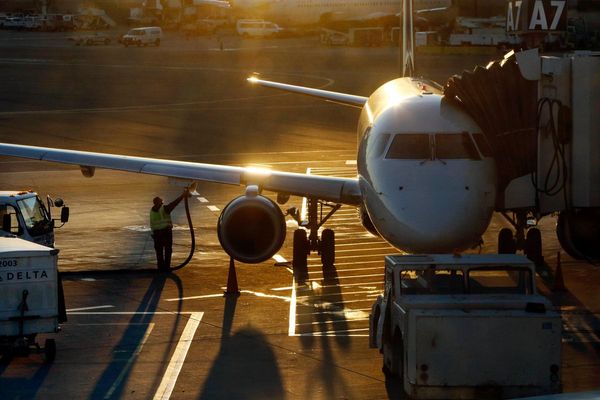
Millions of birds have died in the US in recent weeks, because of a contagious strain of highly pathogenic avian influenza, popularly known as bird flu.
The bird flu has also led zoos across the US to temporarily close aviary exhibits and move birds away from the public. At zoos from Colorado to Maryland, species ranging from ostriches to penguins have been moved indoors.
The virus poses a low risk to humans, but the US Department of Agriculture (USDA) has estimated that nearly 24m poultry birds, mostly chickens and turkeys, have died of the flu since February, when a flock of turkeys in Indiana were confirmed to have the virus. The bird flu has been seen in at least 24 states.
Last seen in the US in 2015, bird flu arrives through wild migratory birds, the season for which lasts from March to May. Wild birds, including waterfowl like ducks and geese, tend to not get sick when infected. Farmed chickens and turkeys are highly susceptible.
As a result, poultry meat and eggs are in tighter supply. In Iowa, the state that produces the most eggs, more than 11m of 56m egg-laying hens have died.
“As long as the [wild bird] migration patterns continue, there is a risk for disease to continue to be introduced to our domestic population,” Chloe Carson, the communications director of the Iowa agriculture department, told CNN.
Egg prices have risen. The average price of a dozen eggs has reached $2.60, compared to around $1.40 at the same time last year, according to the USDA.
The agriculture secretary, Tom Vilsack, told reporters on Tuesday that because poultry facilities developed stricter containment measures after the last bird flu outbreak in 2015, they are better equipped to prevent the virus spreading.
“The nature of the outbreaks, the size of the operations that have been impacted, the number of states that are dealing with backyard operations as opposed to commercial-sized operations, would strongly suggest that when this is all said and done, it’s going to be significantly less than what we experienced in 2014-15,” Vilsack said.
ZOO UPDATE: Cases of avian flu have been confirmed across the US, including Maryland. This strain of the disease is highly contagious and lethal to birds. As a precautionary measure, most avian species will be off exhibit until the threat has subsided: https://t.co/PzV65XbXpQ pic.twitter.com/rCgFeIkPBM
— Maryland Zoo (@marylandzoo) March 22, 2022
Zoos have also taken precautionary measures. In a statement, the Maryland zoo said: “We have moved birds that are more likely to come in contact with migrating waterfowl.
“These birds have been moved to indoor housing. Because the disease can be tracked on shoes, zoo aviaries have been closed and indoor contact with birds is limited to a small number of staff.”
While previous bird flu viruses have affected humans, the Centers for Disease Control and Prevention (CDC) has noted that this current virus has so far posed a low risk to the general public’s health.
“Some people may have job-related or recreational exposures to birds that put them at higher risk of infection,” the CDC said. “The CDC is watching this situation closely and taking routine preparedness and prevention measures in case this virus changes to pose a greater human health risk.”







